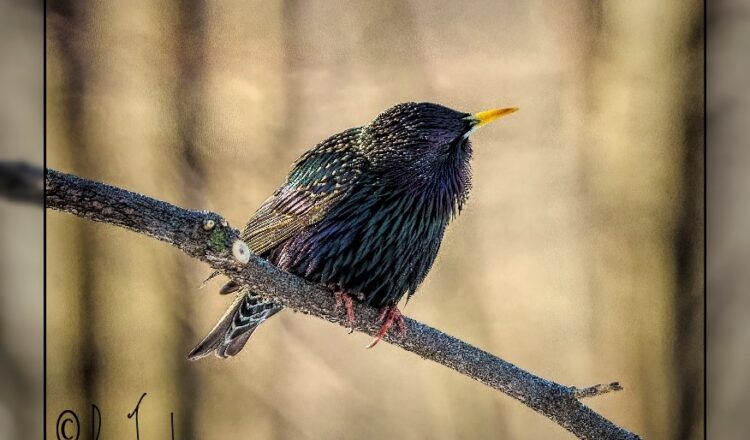By Dan Jordan, Jordanphotog.com
When the name starling comes up, negative thoughts usually follow. Why, then, would I dedicate an entire article to the European starling? Afterall, they are an invasive species and can be quite destructive.
My response is: 1) They’re a part of nature, and I photograph nature. 2) It’s not their fault that someone brought their ancestors to the new world from Great Britain hundreds of years ago. And 3) they can be quite stunning to look at when viewed closely. I might also add that they are master-murmuraters (I think I just made up a new word), further explanation of murmuration follows in this article.

I have been fortunate enough to photograph European starlings very closeup so you can see the detail and the color which they have in their feathers. I think most people think of starlings as black birds, and when we see flocks of them from a distance, they indeed look black. As the three photos in this article demonstrate, that is not the case.
This first photo was taken in March of 2022. The feather colors and the vibrant yellow of the beak were enhanced by back lighting from the sun. This is a recently molted male starling. Not your mama’s black bird, I would have to say!
Allow me to share some facts and figures about the European starling before I share more photos.
European starlings were brought to America by a group of Shakespeare fans who thought that all the birds mentioned in Shakespeare’s works ought to be brought to America. To my point earlier, it’s not the starling’s fault that they are here.
They can mimic up to 20 different bird calls. They are especially adept at mimicking the killdeer’s notes.
They are kept as pets by some and have been trained to speak and appear to be devoted to their hosts. They are stocky, short-tailed birds which when on the ground, seem to strut about.
The white spots on the birds photographed for this article fade over time, but the iridescent colors remain. When a starling molts, the spots reappear and then gradually fade, repeating the process over and over again.
European starlings are the only species of starlings in North America, but not natively. Other starling species exist in the old world. European starlings are actually an Asian bird species. How about those facts? They’re called European, but they’re actually Asian, but they live in North America. Some bird-biologist somewhere is scratching his/her head over that.
As an invasive species, they have been very successful and now are among the most numerous bird species in North America. They also live long lives, up to 15 years in the wild. Their shear numbers mean heavy competition for native species, and they are known to spread diseases to the native birds as well.
Back to murmurations. A murmuration is a flock of birds, sometimes in the thousands, which swirl, swoop, and shift rapidly in unison. And they never crash into one another (OK, rarely. I’m sure given the millions of starlings which have participated in murmurations over the decades, there have been crashes). There is a whole science of murmuration which I find fascinating. Picture a whole crowd of people in a large city walking across a crosswalk when the light turns. They murmurate, no one runs into anyone. It’s not nearly as impressive as bird flocks murmurating, though. Google murmuration to see amazing videos of murmurations. They are stunning.
Other species of birds murmurate but European starlings are recognized as the head of the class.
This next photo is of a recently molted male starling walking up a branch. The colors are stunning.
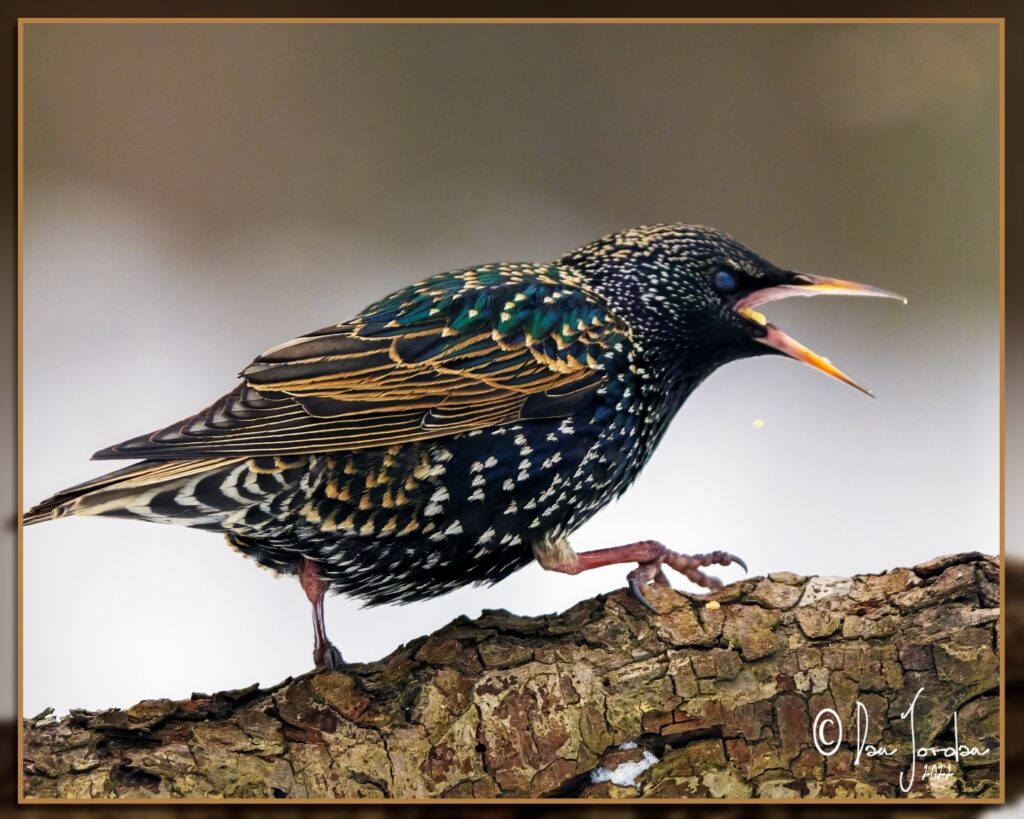
And the last photo shows two male starlings squabbling, probably over a female. I consider this photo to be among the best I’ve ever captured, invasive species or not.
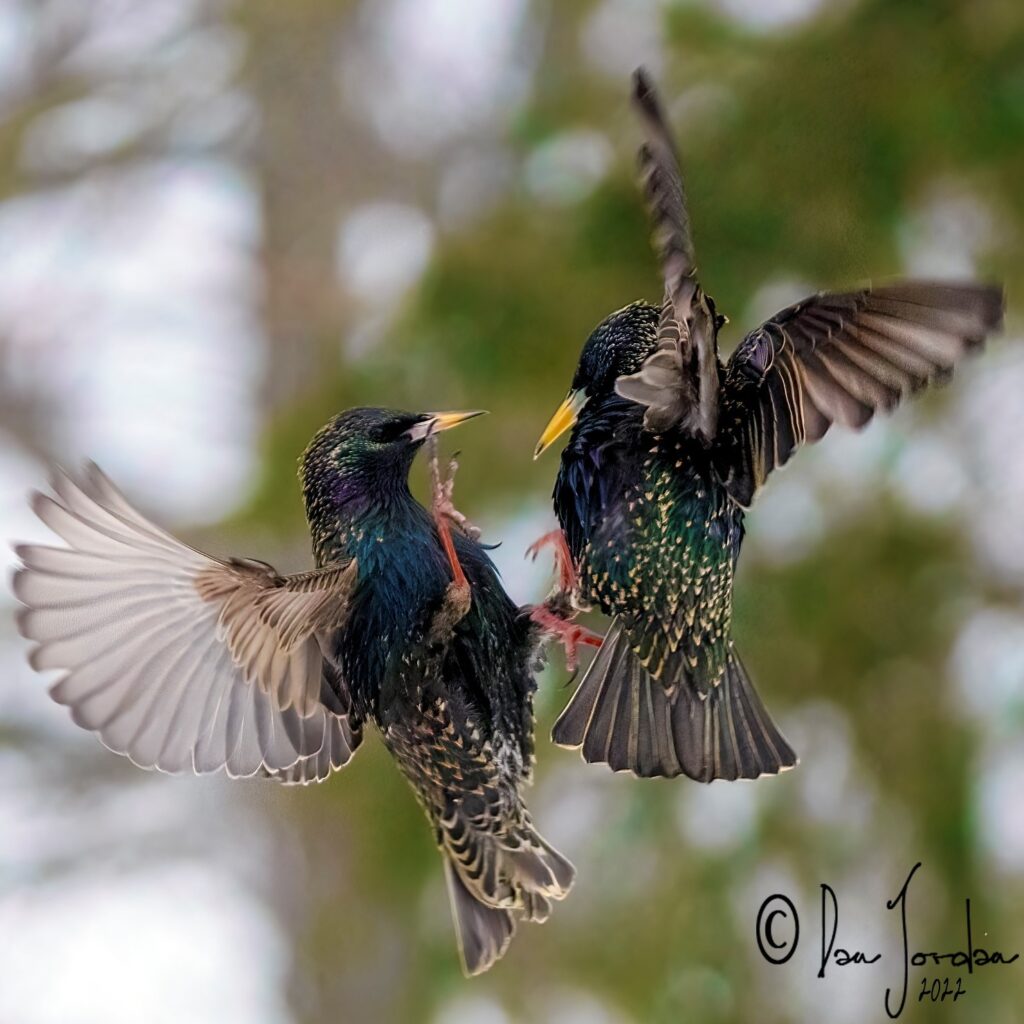
Keep your eyes open for murmurations, they’re fascinating to watch. Also, take a closer look at that “blackbird” you see on the wire or in your lawn. Look closely at the color and for the telltale white spots of recently molted starlings.
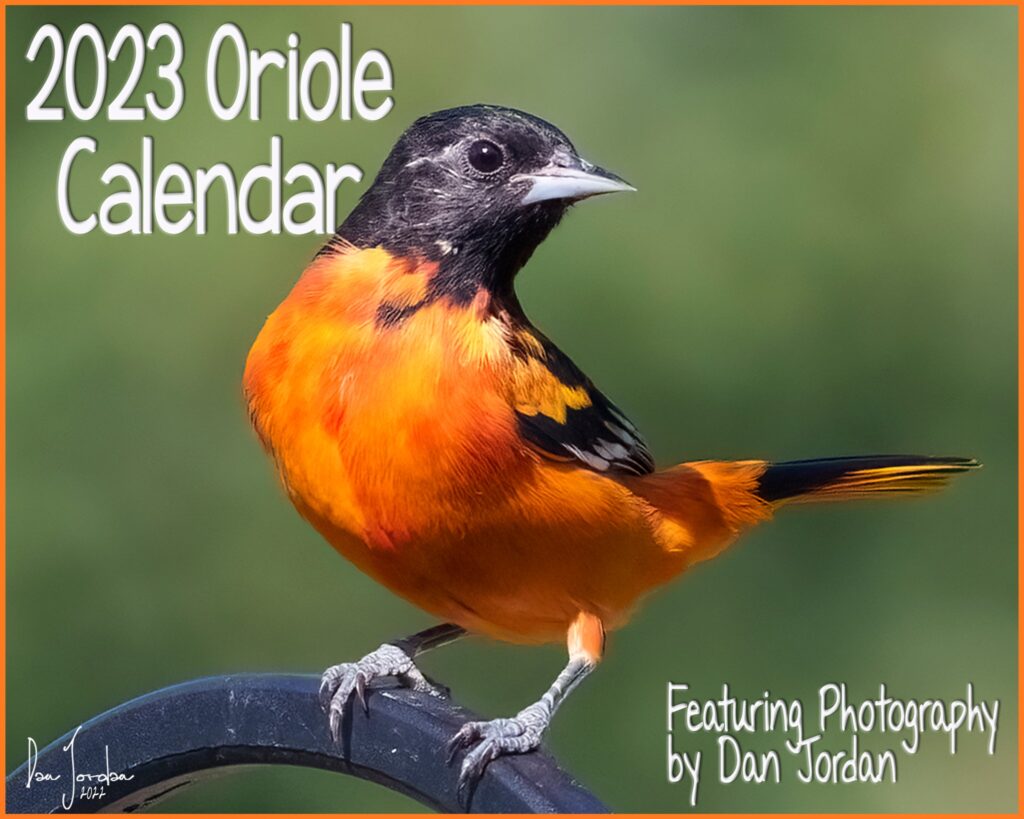
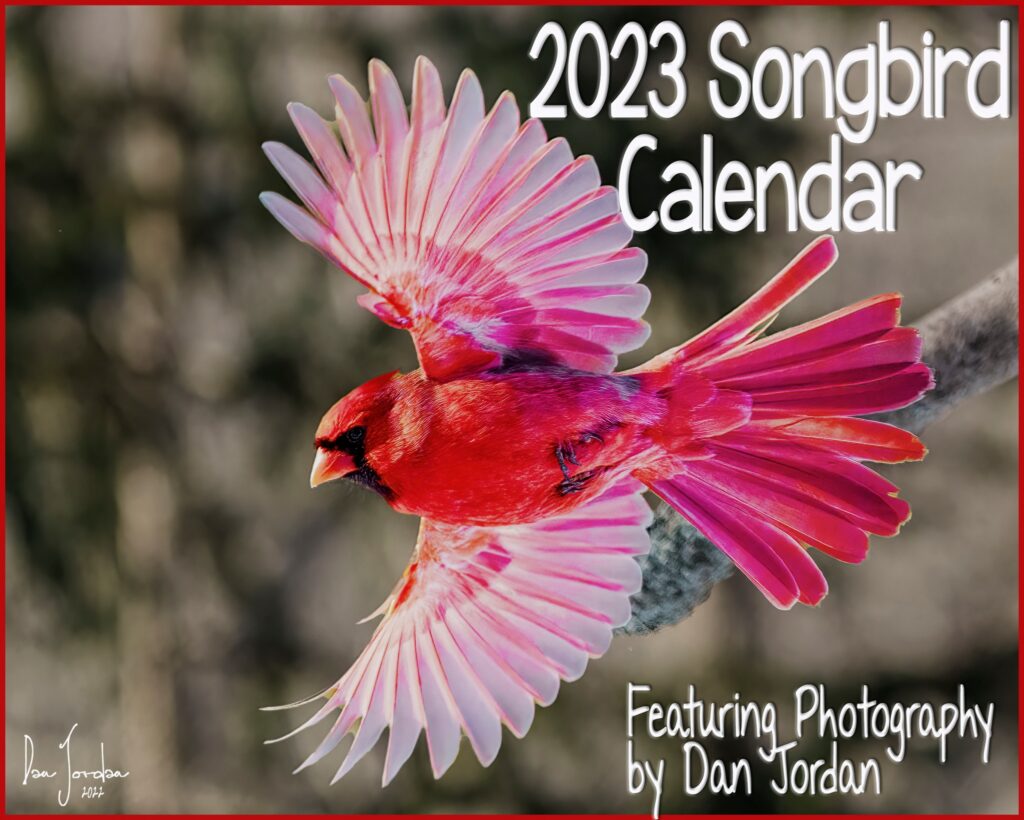
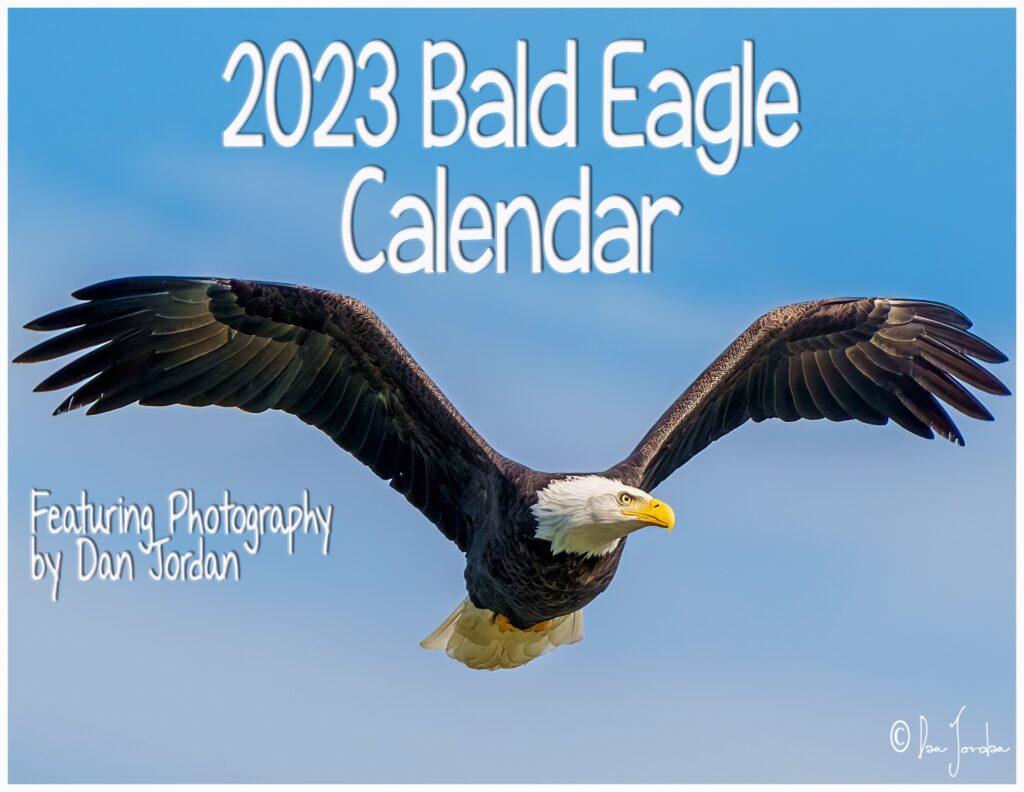
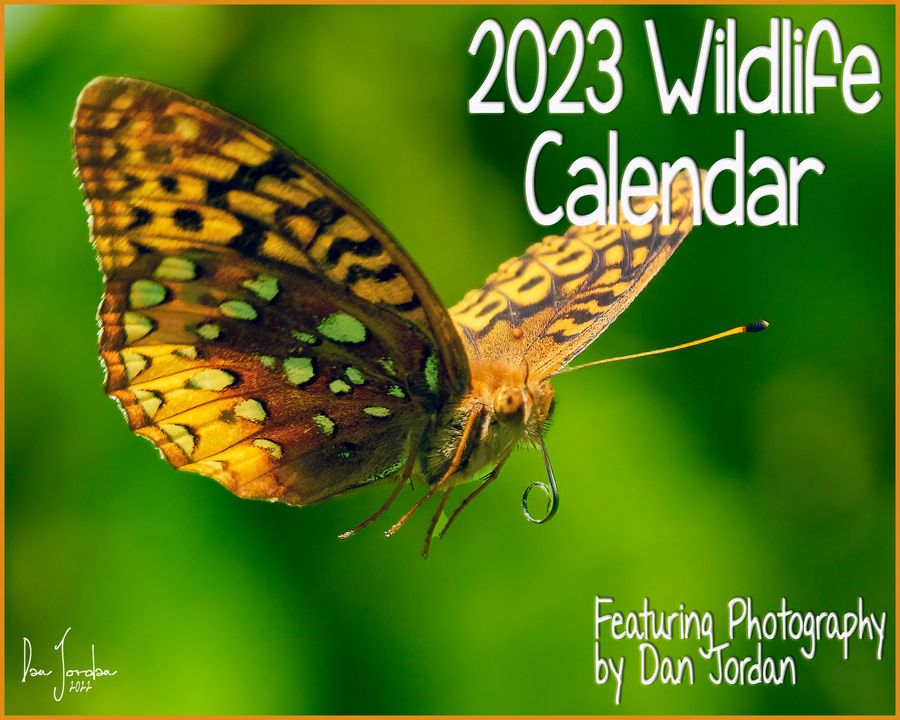
Do you know about Dan Jordan’s calendar collection ? Available for sale now!!
The three other calendars I’ve done this year are running a little behind the eagle calendar for delivery but they’re close. Selecting photos not to use for each of these was difficult. It was such a great year for wildlife photography! Message me if you want one or more set aside for you. GREAT GIFTS which give for a full year! I ship to anywhere on the planet with an “address”! Connect with Dan on Facebook here, or send him an email anytime, dan@jordanphotog.com



